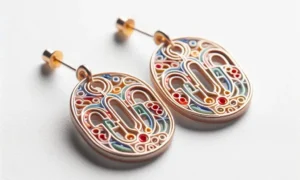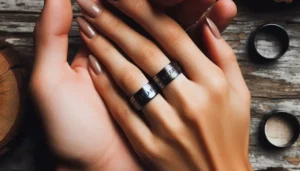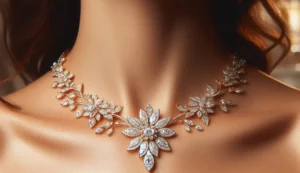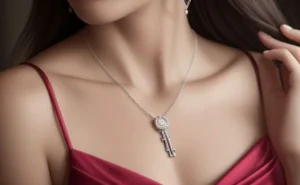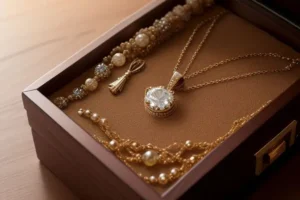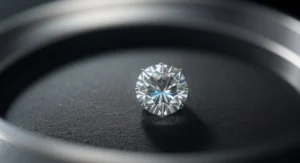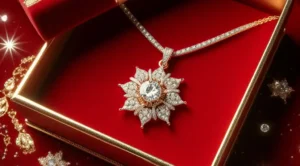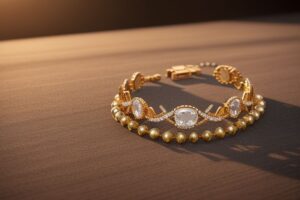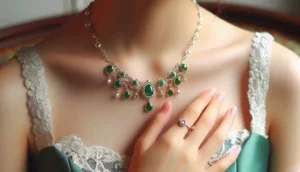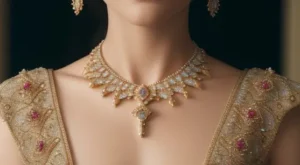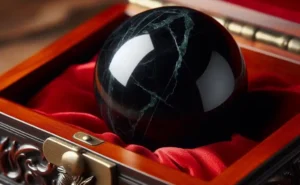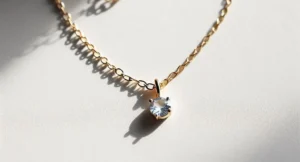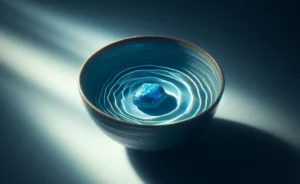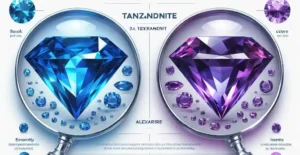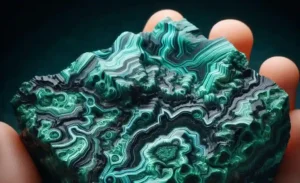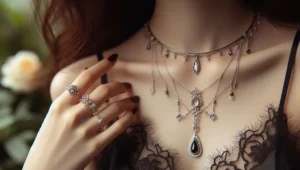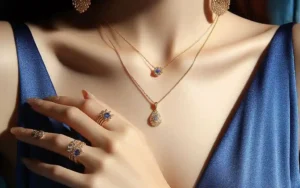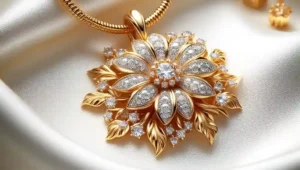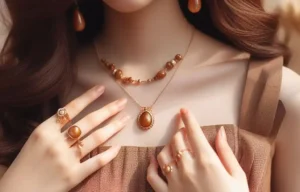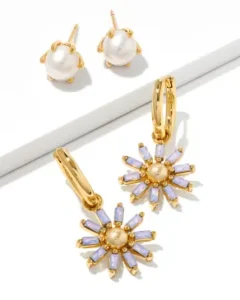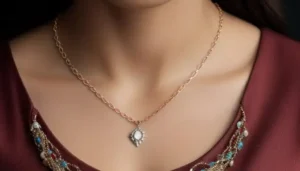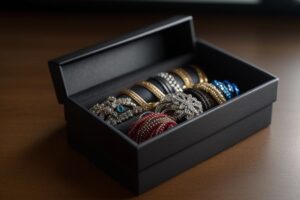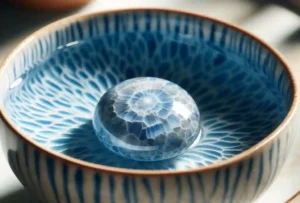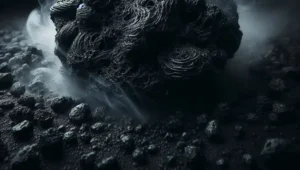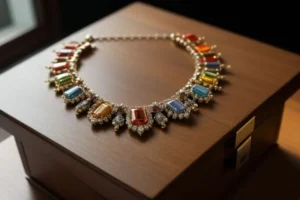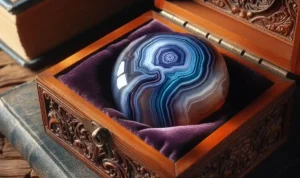How to Tell if Black Onyx is Real? In the world of gemstones, black onyx stands out for its deep, mesmerizing hue and the elegance it adds to any piece of jewelry.
Its allure, however, makes it a target for imitation, with many fake versions flooding the market. Knowing how to distinguish genuine black onyx from imposters is essential for collectors and enthusiasts alike.
This comprehensive guide offers expert tips to help you determine the authenticity of black onyx, ensuring you make informed decisions and cherish genuine pieces.
How to Tell if Black Onyx is Real?
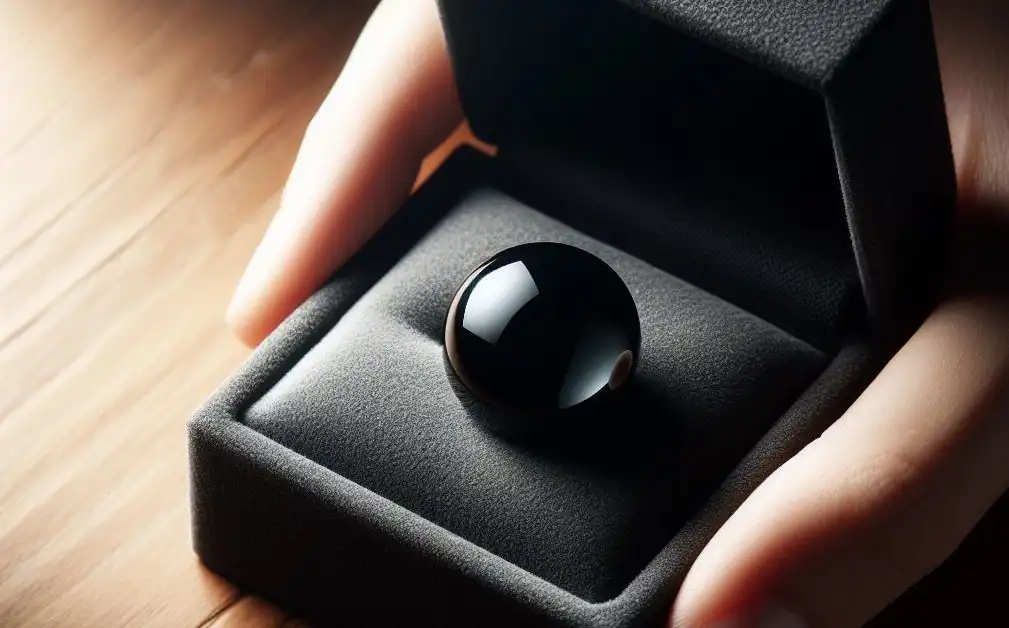
– Conduct a scratch test: Use a metal tool to gently scratch the surface. Genuine black onyx, with a Mohs hardness rating of 7, should not easily scratch.
– Observe temperature and feel: Real black onyx remains cool to the touch for longer and feels solid and smooth, unlike imitations that warm quickly or feel lighter.
– Examine under light: Check for opacity by holding the stone against a light source. Authentic black onyx will not allow light to pass through and should display a consistent texture without air bubbles when viewed under magnification.
– Perform a weight test: Genuine black onyx has a significant density that contributes to its weight. Compare the stone’s heft to that of a known real black onyx piece; discrepancies could indicate a fake.
– Consult a professional: If unsure, have the stone appraised by a certified gemologist who can use specialized tools to analyze the stone’s structure and properties for authenticity.
– Know common imitations: Familiarize yourself with the appearance and properties of materials like glass, plastic, and dyed agate, which are often used to simulate black onyx, but lack its natural characteristics.
Understanding the Basics of Black Onyx
Black onyx belongs to the chalcedony family, a form of silica mineral quartz, which features a distinctive composition that contributes to its striking appearance and durability. Originating in the cavities of lava, this formation process gifts black onyx with its unique structural qualities.
The stone’s solid foundation is reflected in its rating of 7 on the Mohs scale of hardness, showcasing its resistance to scratches and general wear. This level of durability is not just a testament to the stone’s resilience but also its appeal for use in various applications, particularly in jewelry making and as decorative items.
The allure of black onyx is further enhanced by its historical significance, having been valued for its beauty and supposed protective qualities since ancient times. Its deep, dark hue is often associated with strength and vigor, making it a favored choice for those seeking pieces that carry both aesthetic appeal and symbolic meaning.
Understanding these fundamental aspects of black onyx not only deepens appreciation for this gemstone but also assists in recognizing its genuine form amidst imitations.
The Scratch Test – A Simple Yet Effective Method
The scratch test offers a direct approach to ascertain the legitimacy of black onyx. This technique leverages the stone’s inherent hardness, which, as mentioned, ranks at a 7 on the Mohs scale. The premise is simple: genuine black onyx should resist scratching from metal objects, a property stemming from its robust composition.
To conduct this test, gently swipe a metal tool, such as a knife blade or pin, across the stone’s surface. A true black onyx will emerge unscathed, while a counterfeit, lacking the stone’s natural hardness, may display a visible scratch. This method should be employed with utmost care to prevent potential harm to the stone.
It is a straightforward yet revealing test that, when performed judiciously, contributes valuable insight into the stone’s authenticity. It’s important to remember that while this test can be indicative, it’s one of several methods to be used in concert when assessing a stone’s genuineness.
Observing the Temperature and Feel of the Stone
An authentic black onyx has a distinctive coolness that is palpable upon first touch, which notably takes a significant amount of time to adjust to the warmth of your hand. This characteristic, intrinsic to genuine stones, stems from their natural thermal conductivity, which contrasts sharply with that of synthetic substitutes.
When conducting this tactile test, pay attention to how the stone reacts to body heat. Natural black onyx should retain its coolness longer than imitations, providing a subtle yet clear indicator of its authenticity. Furthermore, the texture of the stone under your fingers can offer additional insights.
Real black onyx will feel smooth and solid, indicative of its dense composition. In contrast, counterfeit pieces, often made from materials like plastic or glass, may feel lighter and warmer quickly due to their inferior thermal properties and lower density.
This method, focusing on the sensory experience of touch and temperature, allows for an intuitive assessment of the stone, offering a direct and personal way to gauge its genuineness. Remember, this test is best used as part of a broader strategy, integrating multiple observations to form a more complete picture of the stone’s authenticity.
Examining the Stone Under Light
An enlightening approach to determining the authenticity of black onyx involves its examination under varying lighting conditions. This method hinges on the stone’s inherent opacity. Genuine black onyx is characteristically opaque, blocking light rather than permitting its passage.
This feature becomes particularly evident when the stone is held against a light source. A true black onyx will show no translucency, remaining uniformly opaque even when backlit.
Delving deeper into this investigation, using a magnifying glass can unveil further details crucial for authentication. Under magnification, genuine black onyx reveals a consistent texture, free from the air bubbles that typically mar the integrity of glass replicas. Such uniformity is a hallmark of the stone’s natural formation, distinguishing it from less sophisticated fabrications.
This process of examination does not stand alone but complements other methods to piece together a comprehensive understanding of the stone’s authenticity. While it offers insightful observations, particularly in terms of opacity and texture, it is most effective when applied alongside other evaluative techniques discussed previously.
This integrated approach enhances the accuracy of your assessments, guiding you towards a confident determination of whether your black onyx is indeed the real deal.
The Weight Test – Real vs. Fake
When evaluating the authenticity of black onyx, the heft of the stone is an insightful factor to consider. Genuine black onyx possesses a notable density due to its compact, crystalline structure, making it perceptibly heavier than many materials used to mimic its appearance. This difference in weight is a subtle but telling characteristic that can guide you in distinguishing real black onyx from counterfeit versions.
To perform the weight test effectively, hold the stone in question in your hand and gauge its weight, then compare it to another piece of black onyx whose authenticity is certain. Even without precise measuring tools, a discernible difference in weight can be an indicator of whether the stone is genuine or not.
Remember, this technique should not be used in isolation but rather in combination with other evaluative methods outlined earlier. Together, these strategies create a robust framework for authentication, leveraging the physical properties of black onyx to identify true specimens.
Keep in mind that while this test contributes to a holistic evaluation, it is not infallible on its own. Variations in size and shape between different pieces of black onyx can influence their weight, making it crucial to consider this test as part of a broader investigative approach. By integrating this method with other tests, such as examining the stone’s luster, temperature response, and scratch resistance, you can form a more accurate assessment of the stone’s authenticity.
Professional Appraisal – When in Doubt, Consult an Expert
Navigating the complexities of gemstone authenticity can sometimes require more than just a keen eye and the application of home tests. When the verification of black onyx’s genuineness becomes challenging, turning to a professional gemologist offers a reliable solution.
These experts are equipped with specialized tools, such as spectroscopes, microscopes, and refractometers, that provide detailed analyses beyond the capabilities of unaided observation. Their extensive training allows them to discern subtle nuances in gemstones that distinguish authentic black onyx from sophisticated counterfeits.
By analyzing factors such as the stone’s structure, inclusions, and optical properties, a gemologist can offer conclusive insights into its authenticity. Seeking a professional appraisal not only bolsters your confidence in the stone’s genuineness but also protects your investment in what might be a significant acquisition.
Remember, the expertise of a certified gemologist is invaluable, particularly when other methods leave room for doubt or when you’re dealing with high-value items. Engaging their services is a prudent step toward ensuring the authenticity of your black onyx, bringing clarity and assurance to your endeavors in collecting or purchasing gemstones.
The Importance of Buying from Reputable Sellers
Securing your black onyx from reputable sellers significantly minimizes the risk of encountering counterfeit stones. Established jewelers and certified gemstone merchants uphold stringent standards for authenticity and often accompany their sales with verifiable documentation of the stone’s genuineness.
These entities value their reputation and customer trust, making them reliable sources for acquiring genuine black onyx. Prior to making a purchase, it’s advisable to undertake thorough research into the seller’s background. Look for reviews from previous customers, and if possible, solicit recommendations from trusted individuals who have experience in buying gemstones.
Many reputable dealers also belong to professional organizations or associations, which can be a testament to their commitment to quality and authenticity. Engaging with such sellers not only provides you with peace of mind but also ensures that you have recourse should the authenticity of the black onyx come into question after purchase.
Remember, investing time in selecting the right seller is as crucial as the investment in the gemstone itself. It safeguards your acquisition, ensuring that the beauty and integrity of the black onyx you choose are beyond reproach.
Staying Informed About Common Imitations
Understanding the materials most commonly employed to mimic black onyx is a crucial step toward ensuring the authenticity of your piece. Among these, glass, plastic, and dyed agate are the primary substitutes, chosen for their superficial resemblance to the real gemstone. Each of these materials, however, falls short of replicating the distinctive properties of genuine black onyx.
Glass imitations can sometimes trick the untrained eye with their polished appearance, but they often contain air bubbles and lack the solid, cool feel of real stone. Plastic, while easy to mold into convincing shapes, quickly warms to the touch, betraying its synthetic nature. Dyed agate, though closer in hardness to real onyx, usually presents irregularities in color and pattern that genuine black onyx does not exhibit.
By familiarizing yourself with these common substitutes, you refine your ability to conduct a thorough assessment. This knowledge empowers you to scrutinize potential acquisitions more effectively, enhancing your confidence in distinguishing authentic black onyx from its imitations.
Remember, while these materials may sometimes mimic the look of black onyx, they cannot replicate its natural beauty, durability, or the cool, dense feel that characterizes the genuine stone. Keeping this information at the forefront of your mind will serve as a valuable tool in your quest for authentic black onyx.



